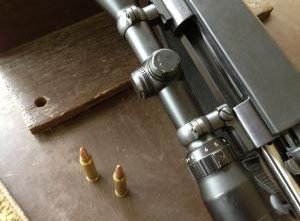Spotting Scope Information Guide
Spotting Scope Information Guide
An accomplished and professional big game hunter will typically spend a lot of his time researching hunting gear required for the hunt. Spotting scopes, binoculars, riflescopes, guns, bows, bullets and arrows will be his focus area, not that other equipment is not important, but the fact is that these few items will have a direct bearing on the success of his hunt.
A spotting scope is a portable and compact optical device essentially designed for observation of near or on earth objects. Spotting scopes are very much like telescopes with lesser magnification but offering a wider field of view. Spotting scopes are field durable and can withstand the shock and stress of being tossed and bounced around. The other important difference is that spotting scopes provide a correctly oriented image with the magnification necessary to see distant animals and birds. Even in low light conditions scopes offer a clear and brighter image, this is particularly important, as most animals get active during dusk.
When shopping for a good spotting scope you need to consider the following points.
Magnification: A scope between 15x and 60x is recommended; if you need magnification below 15x you may use a binocular. Above 60x the field of view (the panoramic breadth) gets narrow and the brightness dims.
Magnification between 20x – 40x is optimal, as image brightness and field of view offered are good.
Objective lens: The lens at the far end is called the objective lens, the bigger the lens the brighter and clear the image. It is important to note that bigger objective lens will also result in more weight and price. 80mm-85mm objective lens will allow you to view animals clearly earlier or later in the day, lens with lesser diameter will go dark from lack of sunlight.
Exit pupil: It is the diameter of light visible through the eyepiece at the near end of the scope. It is calculated by dividing the objective lens diameter with the magnification. Higher the magnification the bigger the objective lens needed. In general exit pupil should not go below 1.33mm.
Eyepieces: Eyepieces are responsible for the magnification of the scope. They are also important in determining the exit pupil size, and field of view. Eyepieces have a range from 15x – 45x and 20x – 60x. Hunters usually use lower magnification to get a wider field of view and then use the higher magnification to observe details of the game. Scopes come with fixed or interchangeable eyepieces. Usually waterproof scopes come with non-interchangeable eyepieces.
Field of view: The panoramic width of the area visible at 1000 meters or yards from the observer. Generally as the magnification increases the field of view decreases. A wide field of view is recommended for fast moving game like antelope.
There are two types of designs available in spotting scopes: angled and straight. Angled scopes have eyepieces offset at an angle of 45º – 90º from the barrel, whereas in straight scopes the barrel and the eyepieces are more or less aligned with each other. Angled scopes are used when there are more than one users of differing height or you are viewing mountains and hillsides from below. Straights are useful when glassing from an elevated position, whereas angled scopes are useful when scanning the cliffs or the mountains.
Strong, sturdy, and lightweight scopes having a strong housing is recommended for backpackers. The ideal length should fifteen inches or less and the weight should be between 35 – 40 ounces. Anything longer and heavy will be uncomfortable to carry around. Remember, investment in optics is a lifetime investment.
Waterproof and fog proof scopes are recommended since fog proof scopes are nitrogen or gas filled. Rubber armoring is desirable to protect against impact and abrasive material and is easier to handle in cold and wet conditions.
Scopes are available in the range of $200 – $2000; choose a scope that is strong and sturdy while being relatively lightweight.
Zeiss, Lecia, and Swarovski are the top-end brands available in the market today. Zeiss Diascope 85 is one of the favorites of many a big game hunters. Brands such as Leupold, Nikon, Pentax and Kowa, among many others are good and relatively inexpensive.
Do some comparison-shopping before finalizing your scope and do not forget to budget for a sturdy tripod to support your expensive scope. Great deals can be found with a little research on the Internet.



